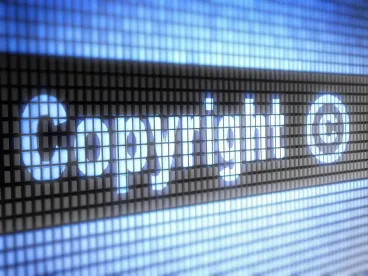Copyright jurisprudence in 2020 was, in many ways, a study in the scope of copyright protection. While certain courts brought century-year-old precedent to the forefront to interpret the scope of copyrights, other courts ruled overruled 40 years of precedent to even the playing field between popular works and works that are less known.
In the wake of the US Court of Appeals for the Ninth Circuit’s pivotal copyright decision in the Led Zeppelin “Stairway to Heaven” lawsuit, several district courts, within and outside California, have relied on the en banc decision to resolve similar issues related to copyright infringement. The defining scope of the Zeppelin decision will have long-lasting effects within the music industry and beyond.
Unprotected Subject Matter
In 2020, the Supreme Court and circuit courts grappled with questions related to what is eligible for copyright protection in a variety of contexts, from annotated statutes to animated characters to video games. In many cases, the courts found the subject matter to be unprotectable.
Annotations That Accompany State and Local Laws are Not Copyrightable
In a split decision, the Supreme Court of the United States determined that annotations to the Official Code of Georgia Annotated (OCGA), an annotated compilation of Georgia statutes, are not copyrightable. Georgia v. Public.Resource.Org, Inc., 18-1150 (Supr. Ct. Apr. 27, 2020) (Roberts, Justice) (Thomas, Justice, dissenting) (Ginsburg, Justice, dissenting). (IP Update, May 2020)
The OCGA is compiled and annotated by Matthew Bender & Co. under a work-for-hire agreement with the Georgia Commission with summaries of judicial opinions, editor notes, excerpts from law review articles and other research references. The agreement provides that any copyright in the OCGA vests exclusively in the “State of Georgia, acting through the Commission.” A nonprofit group purchased a copy of the OCGA and distributed it via its free website. The Georgia Commission sued for copyright infringement as it related to the annotations.
The Supreme Court addressed the issue of whether the government edicts doctrine extends to, and thus renders uncopyrightable, works such as annotations. The government edicts doctrine is a judicially created exception to copyright protection prohibiting protection for government edicts, such as judicial decisions and statutes. In 1888, the Supreme Court first applied the doctrine to hold that non-binding explanatory legal materials are not copyrightable when created by judges who possess the authority to make and interpret the law. The Supreme Court reasoned that the same logic applies to non-binding, explanatory legal materials created by a legislative body. Because the annotations are prepared by Georgia’s legislative body in the course of its legislative duties, the Supreme Court held that the government edicts doctrine puts them outside the reach of copyright protection.
Justice Thomas dissented, opining that notes prepared by an official court reporter and published with the reported opinions are not excluded by such precedent. Justices Ginsburg and Breyer also dissented, opining that the annotations are drafted after lawmaking ends and are not part of the lawmaking process, thus the annotations should be copyrightable.
Anthropomorphized Characters Representing Human Emotions are Not Copyrightable
In 2020, the Ninth Circuit was called upon to determine whether the Moodsters, “lightly sketched anthropomorphized characters representing human emotions” are subject to copyright protection. Daniels v. Walt Disney Co., 18-55635 (9th Cir. Mar. 16, 2020) (McKeown, J.). (IP Update, Apr. 2020)
The Moodsters are five animated characters, color-coded to represent different human emotions. The Moodsters Company pitched the Moodsters to Disney and in 2010, Disney began developing a movie about five anthropomorphized emotions called Inside Out. The Moodsters Company sued Disney for copyright infringement and the district court granted Disney’s motion to dismiss.
On appeal, the Ninth Circuit analyzed whether the Moodsters qualified for copyright protection under (1) the Towle test and (2) Warner Bros. test. The three-prong Towle test requires that an animated character have physical as well as conceptual qualities; is sufficiently delineated to be recognizable as the same character whenever it appears and displays consistent, identifiable character traits and attributes; and is especially distinctive and contains some unique elements of expression. The Warner Bros. Pictures test requires the characters dominate the story such that they are the story being told.
Under the Towle test, Disney did not contest that the characters have physical qualities. It was the second prong that proved fatal. The appellate court reasoned that “a character that lacks a core set of consistent and identifiable character traits and attributes is not protectable, because that character is not immediately recognizable as the same character whenever it appears.” The Ninth Circuit compared the Moodsters with characters like Godzilla, a consistently prehistoric, fire-breathing, gigantic dinosaur alive and well in the modern world, who maintains consistent and identifiable character traits and attributes across various productions and adaptations. The court found that because the Moodsters did not display recognizable, consistent, identifiable character traits wherever they appear, they are not protectable by copyright. The court found further found the Moodsters failed the third prong in that they were not “especially distinctive.” The Ninth Circuit concluded that even under the Warner Bros. test, the Moodsters were not entitled to copyright protection.
In January 2021, the Supreme Court denied the plaintiff’s petition for certiorari.
Generalized Expressions of Scientific Facts and Generic Themes are Not Copyrightable
In a copyright infringement lawsuit filed by the designer of a sci-fi video game against CBS Broadcasting, Inc. related to the Star Trek Discovery series, the US Court of Appeals for the Second Circuit held that the scientific facts about a tardigrade’s (also known as water bears) survivability and the idea that they are present in space are not copyrightable. Abdin v. CBS Broad. Inc., 19-3160 (2d Cir. Aug. 17, 2020) (Chin, J.) (IP Update, Aug. 2020). The appellate court explained that a space-traveling tardigrade is merely a generalized expression of a scientific fact and unprotectable. The Second Circuit also explained that certain scènes à faire of the video game, such as space travel, supernatural forces and alien encounters, are all generic “stock themes” that appear regularly in the science fiction genre and are therefore not protected by copyright law.
Copyright Infringement- Damages
The Ninth Circuit held that, even when asserted as a claim for declaratory relief, an action that turns on the existence and potential infringement of a valid copyright invokes the Copyright Act and therefore attorneys’ fees are available to the prevailing party. Doc’s Dream, LLC v. Dolores Press, Inc. and Melissa Scott, 18-56073 (9th Cir. May 13, 2020) (Callahan, J.) (IP Update, May 2020). The appellate court noted that even an underlying action seeking declaratory relief does sufficiently invoke the Copyright Act in “any action where the scope of copyright is at issue” and allows a court to “award a reasonable attorney’s fee to the prevailing party as part of the costs.”
Music- The Scope of Protection
In an en banc decision, the Ninth Circuit rejected the high-profile copyright infringement lawsuit against Led Zeppelin, finding that the opening notes of “Stairway to Heaven” did not infringe the band Spirit’s 1967 song “Taurus.” Skidmore v. Led Zeppelin, 952 F.3d 1051 (9th Cir. Mar. 9, 2020) (IP Update, Mar. 2020). In determining whether the two songs were substantially similar, the Ninth Circuit overruled 40 years of its own precedent, rejecting the “inverse ratio rule” (a rule that where evidence of access to an original musical work is strong, the burden of proof to show similarities between the original and the infringing work are mitigated, to give rise to an inference of copying), noting that the rule creates an unfair advantage for popular works by lowering the standard to almost zero.
The Ninth Circuit addressed the scope of protection between the 1909 and 1976 Copyright Act. “Taurus” was registered with the US Copyright Office as an unpublished musical composition in 1967, which made it subject to the Copyright Act of 1909. As such, the sweeping reforms of the Copyright Act of 1976, including the protection of sound recordings, were deemed inapplicable. Thus, the appellate court determined that the “one page deposit copy” of the “Taurus” sheet music that was lodged with the Copyright Office “defined the scope of the copyright at issue.” Under that framework, the Ninth Circuit concluded that it was not in error for the district court to limit the similarity analysis to what was written on the sheet music and to reject Skidmore’s argument to play sound recordings of “Taurus.”
Plaintiffs have petitioned for certiorari.
* * * *
A week later, the US District Court for the Central District of California relied on Skidmore in Gray et al. v. Perry et al., No. 2:15-cv-05642 (CD Cal. Mar. 16, 2020), to reverse a jury verdict holding that would have required Katy Perry and others to pay $2.8 million in damages for copyright infringement. Finding that musical elements that are “common or trite”—such as long-short-long rhythms, chord progressions, certain tempos, recurring vocal phrase, repeating hook phrases, alternating emphasis of strong and weak beats—and elements that are ubiquitous in popular music—like rhythms, chants, the use of horns—are not protectable. Citing Skidmore, the district court noted, “[t]hese building blocks belong in the public domain and cannot be exclusively appropriated by any particular author.”
* * * *
Two weeks later, the US District Court for the Southern District of New York in Griffin v. Sheeran, et al., No. 1:17-cv-05221 (SDNY Mar. 24, 2020), which had deferred proceedings until after the en banc Ninth Circuit issued its ruling in Skidmore, relied on Skidmore to limit the scope of a copyright claim against Ed Sheeran’s “Thinking Out Loud.” The New York court relied on the Ninth Circuit’s guidance as to whether jurors could be permitted to use the plaintiff’s audio recording in evaluating similarities between the two works. Based on the holding in Skidmore, the New York court determined that the scope of the plaintiff’s copyright is limited to what is contained in the deposit copy and has undergone the copyright process—thus, the elements of the sound recordings not included in the deposit copy are inadmissible.
Music – Royalty Rates for Digital Transmissions
In 2020, the US Court of Appeals for the District of Columbia reversed two determinations from the Copyright Royalty Board.
First, streaming music providers won their challenge to the Copyright Royalty Board’s significantly increased royalty rates they were ordered to pay copyright owners. Under the Copyright Act, the Royalty Board set copyright royalty rates for the right to reproduce and distribute musical works every five years. In Johnson v. Copyright Royalty Bd., 19-1028 (DC Cir. Aug. 7, 2020) (IP Update, Aug. 2020), the appellate court determined that the Royalty Board erred by not giving the streaming service providers proper notice that it would be adopting a higher rate, and sufficient explanation in the decision making for critical aspects in determining the structure.
Second, under the Digital Millennium Copyright Act (DMCA), a lower grandfathered royalty rate is paid by some music services that were early providers of digital music transmissions. Music Choice, a music service that consists of several cable television channels, challenged the Board’s determination that its internet transmissions were excluded from the grandfathered rate. In Music Choice v. Copyright Royalty Bd., 19-1011 (DC Cir. Aug. 18, 2020) (IP Update, Sept. 2020), the appellate court determined that the definition of “service” or “transmission medium” under the DMCA does not exclude internet transmissions. Because Music Choice existed and the transmission was in the medium in existence by July 31, 1998, its internet transmissions were not excluded from the grandfathered rate.
SCOTUS Update – GOOGLE V. ORACLE
On October 7, 2020, after pending at the Supreme Court for almost two years, the Court heard oral arguments from Google and Oracle related to a dispute brought by Oracle (the current owner of a copyright in the Java platform created by Sun Microsystems) against Google’s Android operating system, which Google designed when it entered the smartphone market. The main issue is whether Oracle’s code is copyrightable and whether Google made fair use of the code.
With respect to whether Java code is copyrightable, Google argued that the Java code is so “functional” that it is not protected by copyright, which protects only the “expression” of the author, not the author’s “ideas.” Google relied on the merger doctrine, under which copyright provides no protection when the idea and expression are so tied together that they are inseparable. Google argued that the only way it could make the Android accessible to Java developers was by using the Java code. That, however, did not resonate well with Chief Justice Roberts, who responded, “if it’s the only way, the way for you to get it is to get a license.” Oracle argued that Congress defined literary work to include software and granted copyright protection so long as the code is original. And since Google conceded the code is original—that is the end of the question.
Even if Java code is copyrightable, Google argued fair use justifies its copying of the code. Google maintained that reusing software interfaces is critical to modern interoperable computer software and that it would upend the world to rule the other way. Oracle relied on Supreme Court precedent in arguing that “no court has found fair use or upheld a fair use verdict where a copyist copied so much valuable expression into a competing commercial sequel to mean the same thing and serve the same purpose as the original.” And since Google conceded the purpose and the meaning are the same—that is the end of Question 2.
We will soon find out what the Supreme Court has to say about these questions.
2021 Outlook
There is plenty to look forward to in 2021. We are certain to see big ripples from the Supreme Court decision in Google v. Oracle; whether it will “upend the world” is another story. Certainly the Court may rule on the extent to which software should be afforded copyright protection and the degree to which fair use applies to software copyrights. One thing is for sure—both sides agree that the future of software innovation is at stake. We are also certain to see a rising tide of cases relying on Skidmore v. Led Zeppelin, as we have already seen with the Katy Perry and Ed Sheeran cases. With the elimination of the inverse ratio rule, less popular songs will have a fairer day in court. Finally, once the vaccines allow for the courtroom doors to open again, we expect to see a flood of copyright infringement jury trials that were put on hold in 2020. Indeed, 2021 is looking like a very busy year.






 />i
/>i

